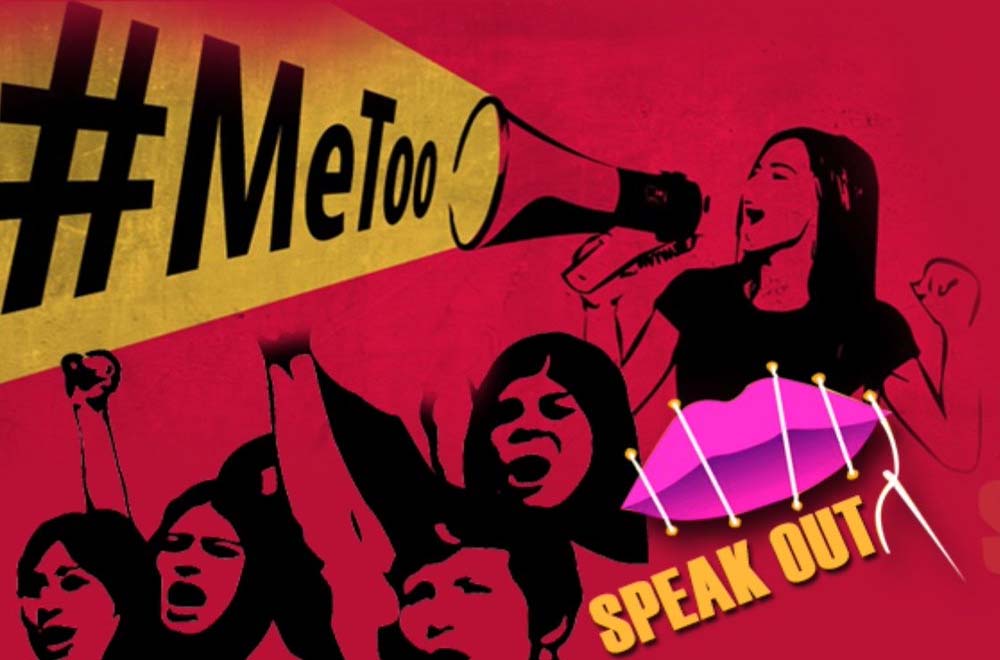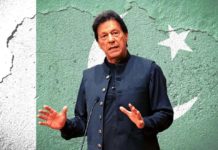Disclaimer: The Eqbal Ahmad Centre for Public Education (EACPE) encourages critical and independent thinking and believes in a free expression of one’s opinion. However, the views expressed in contributed articles are solely those of their respective authors and do not necessarily reflect the position or policy of the EACPE.
When Tarana Burke used the phrase ‘Me Too’ for the first time, she gave the much-needed courage to numerous other women across the globe who, like her, had suffered sexual harassment. People drew inspiration from her courage and it emerged as a full-fledged movement establishing new rules of conduct. The movement had its pros and cons as will be discussed in this piece. The legality and morality of the movement were put to a theoretical test by academicians, writers and commentators. One can imagine how hard it would have been for those narrating their ordeal. Such injustices had left behind a trail and we had to address them.
Cracks in the Movement
It is not that ‘Me Too’ was completely perfect in its approach. The movement faced a complexity of issues. For instance: some cases were taken up by bourgeois women and the voices of the women without agency were compromised and it did look like a bourgeois project to few. Sometimes, such women were used to settle personal vendetta of the organizations that pretended to fight against injustices done to women. Likewise, many cases were published on public platforms without being verified, and so on.
While these fissures need to be fixed, the movement as a whole cannot be ignored. As highlighted in a recent op-ed in The Hindu by Vaishna Roy, the movement “ensured that due process mechanisms were set up in institutions.” It also helped us realize the modifications that our legal system needed. It gave recognition to the idea of consent in the new age relationships. Why did the movement fail to achieve what it had set itself out for?
A Certain Area
The outrage against sexual harassment and and assault was mostly expressed on social media. One could presume that the women (survivors of sexual abuse) were educated, empowered, and not without agency. Sometimes, it is assumed that the women could have avoided such unwanted gestures from their perpetrators, but it is important at the same time to recognize the institutional, deep-rooted and structural nature of the problem and the institutions it emanates from. One could reason that empowerment of women alone was not enough if this could happen to such women who had to use social media on this occasion to voice their torment. The rot was deep and it thus demanded a radical approach. Misogyny in the Indian cinema has been called out on numerous occasions by a few courageous actors who have received little or no support from the rest of the community.
Revolutions and the Structure of Oppression
Paulo Freire warns us of revolutions where people are made mere objects, and not participants in the revolution. Dominant elites sometimes invalidate revolution by “imposing their word on others…” “One is the thinking of the master, the other is the thinking of the comrade, (italics original)” writes Freire. When certain organizations gave support to survivors of sexual violence, the organizations used these women for their personal ambitions and to settle personal vendetta with their opponents. This takeover of the movement by the bourgeois communities was a huge setback to the original purpose of the movement. These groups hesitated to publish original accounts of violence by the state and other authorities. If they appeared anywhere, they appeared as footnotes.
It is not a struggle against sexual violence alone; it is a struggle against patriarchal structures and misogynistic institutions as well.
In his A People’s Constitution, a fascinating historical account of constitutionalism in India, Rohit De writes that when prostitutes in Delhi and other cities cited Article 19 of the Constitution, asserting their right to a trade and profession, the upper caste women would find themselves “deeply concerned” and would want to “amend the freedoms in the Constitution…” Survivors of these crimes are hardly impressed by litigation, often called a bourgeois civil society project by these very women. Sometimes the confessions of these women created problems not for their perpetrators, but for themselves. If the perpetrator happened to be a powerful man, he could use the institutions of the state to his own advantage (criminal defamation, for example). Therefore, it is not a struggle against sexual violence alone; it is a struggle against patriarchal structures and misogynistic institutions as well.
Poor Women and Agency
Clara Zetkin, responsible for organizing the first International Women’s Day, wrote that bourgeois feminism and “the movement of the proletarian women” were two entirely different movements. For women in India, it is hard to find agency role for themselves. Women’s earning power, economic role outside the family, literacy and education, property rights and so on add force to women’s voice and agency. (Development as Freedom, Amartya Sen, pp. 190-191). For an overwhelming majority of women in India, these are the luxuries they cannot afford.
Role of the State
When Nirbhaya was brutally raped in the Indian Capital a few years ago, Justice Verma Committee placed a number of responsibilities on the State (both central and state governments) to prevent crimes against women. Those guidelines have not been implemented. The pendency of cases in crimes against women in India is almost 90 percent. What do these figures reflect? If the state still claims any legitimacy over its citizens, it must do everything possible for gender justice. Legislators questioning women for being out till late or joining rallies in support of rapists must be strongly castigated.
In the recently released World Economic Forum’s Global Gender Gap Index (2019-20), out of the 153 countries, India was ranked 112th, while Pakistan was ranked 151st. Bangladesh, a tiny country, found itself in a relatively better position (ranked 50th). Economic participation and opportunity is one of the indicators in the report. Bangladesh’s relative success to its South Asian counterparts must be rejoiced. In a different context, Amartya Sen explains the rise of economic opportunities for women in Bangladesh through visionary policies by Grameen Bank and Bangladesh Rural Advancement Committee. Rural women in India need policies that can provide them economic opportunities at a large level so that inequalities are addressed and women find agency.
Constitution and Courts
The Indian courts have often ruled on the life and liberty of citizens. Constitution has been invoked by the poorest of the country to fight for their rights. The Supreme Court of India has assumed upon itself the duty of uplifting and empowering women in a number of cases. More recently, in Joseph Shine v. Union of India, Navtej Johar v. Union of India and Indian Young Lawyers’ Association v. Union of India, the Supreme Court ruled in favor of equality and non-discrimination. In Joseph Shine, the Supreme Court struck down the adultery provision of the Indian Penal Code arguing that the provision treated the wife as the property of the husband. Justice Chandrachud observed, ‘It is the duty of this Court to break these stereotypes and promote a society which regards women as equal citizens in all spheres of life (cited in The Transformative Constitution, Gautam Bhatia)’. The Court also focused on substantive equality, noting further, ‘In consonance with constitutional morality, substantive equality is “directed at eliminating individual, institutional and systemic discrimination…” (emphasis mine). The Court also recognized in this judgement individual rights as opposed to group autonomy.
In the long tradition of struggle for gender equality, ‘Me Too’ will be remembered as a beacon of hope for the world of equality that we have set to achieve for ourselves.
Similarly, in the Sabarimala judgment (sent to a larger bench now), the Court ruled in favour of women’s entry into the temple by giving a radical meaning to the idea of equality and debunking the myth that surrounds the idea of exclusion. Chandrachud J. powerfully elucidates, “The issue for entry in a temple is not so much about the right of menstruating women to practice their right to freedom of religion, as about freedom from societal oppression, which comes from a stigmatized understanding of menstruation, resulting in “untouchability.” (para 82)
‘MeToo’ might not have achieved the desired results it had initially set itself out for, but through understanding and studying the fissures in structures that are manifestly patriarchal and misogynist can we secure a life based on equality and mutual respect for women in our society. It is through individual contributions and transformative decisions like the ones mentioned above that we move closer to the ideas of equality and non-discrimination.
In the long tradition of struggle for gender equality, ‘Me Too’ will be remembered as a beacon of hope for the world of equality that we have set to achieve for ourselves.
Aurif Muzafar is a lawyer, currently serving at District and Sessions Court, Bandipora, Kashmir.








[…] Note: For a better version of this article, visit Eqbal Ahmad Centre for Public Education […]